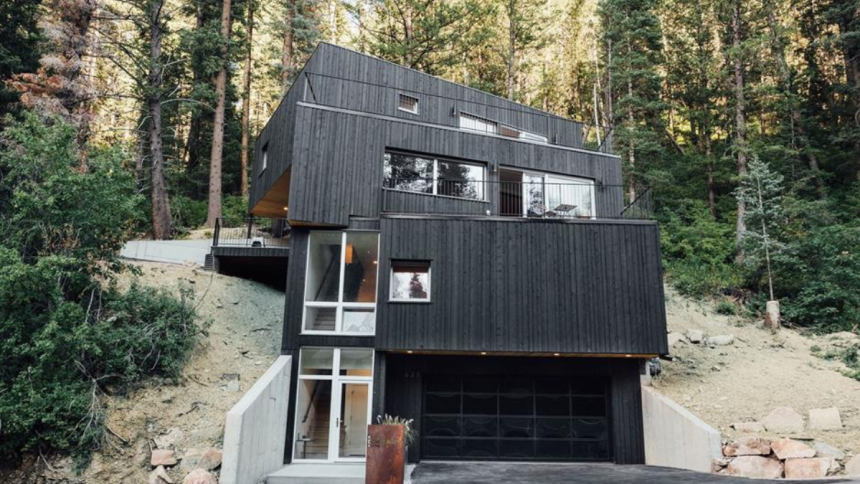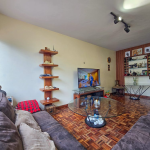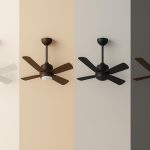Introduction to the Passivhaus Standard
The Passivhaus Standard, originating from Germany in the late 20th century, has emerged as one of the foremost benchmarks for energy-efficient building design worldwide. This standard is not merely a trend but a rigorous methodology that promotes sustainability through exceptional energy efficiency. A building designed under this standard requires minimal energy for heating or cooling, thus significantly reducing its carbon footprint and operating costs.
Wolfline Aluminium & Aluclad Windows & Doors plays a pivotal role in this movement, offering high-performance window and door solutions that align perfectly with the principles of the Passivhaus Standard.
Understanding the Core Principles
To fully appreciate the Passivhaus Standard, it is essential to understand its core principles:
1. Thermal Insulation: Buildings are equipped with high levels of insulation, which minimizes heat loss during colder months and heat gain during warmer months.
2. Airtightness: A well-sealed building envelope prevents unwanted air infiltration, ensuring that conditioned air remains within.
3. High-Performance Windows: Triple-glazed windows with low thermal transmittance reduce heat loss while maximizing natural light.
4. Heat Recovery Ventilation: This system ensures that fresh air enters while extracting stale air, recovering energy in the process.
These principles work in harmony to create a living space that is comfortable year-round, without relying heavily on conventional heating or cooling systems.
The Importance of Energy Efficiency
Energy efficiency is not just a buzzword; it is crucial for combating climate change and reducing reliance on fossil fuels. According to studies, buildings account for approximately 40 percent of global energy consumption and a similar percentage of carbon emissions. By adopting the Passivhaus Standard, we can significantly lower these figures.
Implementing such standards leads to reduced energy bills for homeowners and less strain on local energy grids, making this approach not only environmentally responsible but also economically advantageous over time.
Benefits of Passivhaus Design
Embracing the Passivhaus design has numerous benefits beyond mere energy savings:
1. Comfort: Consistent indoor temperatures improve comfort levels for occupants.
2. Health: Enhanced ventilation improves indoor air quality, contributing to better health outcomes.
3. Durability: High-quality materials used often lead to longer-lasting structures.
4. Value Addition: Properties built to this standard often see an increase in market value due to their energy efficiency ratings.
Wolfline Aluminium & Aluclad Windows & Doors are integral to achieving these benefits by providing systems that enhance thermal performance and aesthetic appeal.
Key Components in Achieving Passivhaus Certification
Achieving Passivhaus certification requires careful attention to detail and adherence to specific components:
1. Design Phase: Start with a comprehensive energy model tailored to your specific climate zone.
2. Quality Construction: Ensure skilled labor and quality materials are used throughout the building process.
3. Window and Door Selection: Choosing appropriate products is vital; this is where Wolfline’s offerings shine with their superior insulation values.
4. Testing and Verification: Conduct blower door tests to ensure airtightness and verify performance against established metrics.
Each component must work synergistically; otherwise, achieving certification becomes significantly more challenging.
The Role of Wolfline Aluminium & Aluclad Windows & Doors
When discussing key elements in achieving the Passivhaus Standard, it is impossible to overlook the impact of high-performance windows and doors provided by Wolfline Aluminium & Aluclad Windows & Doors. Their products are engineered specifically for energy efficiency, featuring excellent thermal break technology that minimizes heat transfer while maintaining structural integrity.
In addition to functionality, these windows and doors offer aesthetic flexibility that allows architects and builders to create visually stunning yet highly efficient buildings.
Case Studies: Successful Passivhaus Projects
Examining successful projects can provide valuable insights into how the Passivhaus Standard can be effectively implemented:
1. The Müller House (Germany): This residential building showcases how thoughtful design paired with high-performance materials can create a comfortable home that consumes minimal energy annually.
2. The Zero Energy House (USA): A groundbreaking project highlighting solar integration alongside Passivhaus principles showcases how innovative technology can further enhance energy independence.
3. The Beddington Zero Energy Development (UK): This community project highlights how mass development can be aligned with sustainable practices without compromising comfort or livability.
Each case illustrates different strategies for integrating the principles of the Passivhaus Standard into various architectural styles and climates.
Challenges and Solutions in Implementing Passivhaus
While adopting the Passivhaus Standard brings numerous advantages, challenges remain:
1. Initial Costs: Upfront investment can be significant; however, long-term savings often justify these costs.
2. Awareness: Many builders lack familiarity with the standard; education is key.
3. Local Regulations: Adapting designs to meet local building codes while adhering to strict standards can prove difficult.
Solutions include investing in training for builders, engaging in community outreach about the benefits of energy-efficient homes, and creating partnerships with suppliers like Wolfline who understand both regulatory environments and design needs.
Moving Towards a Sustainable Future with Passivhaus
As we face increasing environmental challenges, moving towards a sustainable future necessitates innovative approaches like the Passivhaus Standard. This method encourages not just individual responsibility but collective action toward reducing our overall environmental impact.
By prioritizing energy efficiency in our buildings—supported by high-quality products from companies such as Wolfline Aluminium & Aluclad Windows & Doors—we can contribute meaningfully to global sustainability goals while creating healthier living spaces for generations to come.
Getting Started on Your Passivhaus Journey
Embarking on your journey toward a Passivhaus home or building involves several steps:
1. Research: Familiarize yourself with local regulations regarding construction standards.
2. Engage Professionals: Work with architects or builders experienced in Passivhaus design principles.
3. Choose Quality Materials: Invest in high-performance windows and doors from trusted suppliers like Wolfline.
4. Monitor Progress: Regularly assess construction against your energy model throughout the build phase.
By taking these actionable steps, you pave your way towards not only achieving but thriving within a sustainable living environment that adheres to the prestigious standards set forth by Passivhaus.
This journey represents more than just constructing a building; it is about shaping a future where energy efficiency becomes a norm rather than an exception—an initiative all stakeholders can support wholeheartedly.
Lynn Martelli is an editor at Readability. She received her MFA in Creative Writing from Antioch University and has worked as an editor for over 10 years. Lynn has edited a wide variety of books, including fiction, non-fiction, memoirs, and more. In her free time, Lynn enjoys reading, writing, and spending time with her family and friends.















